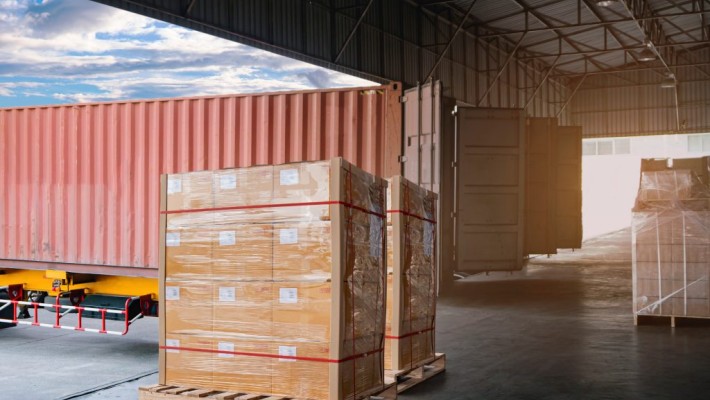Freight Forwarder Insights
Huin International Logistics Latest Articles
Comprehensive Guide to LCL Charges for Exporters and Importers
As an importer or exporter, you might have encountered the acronym LCL while planning to ship goods in smaller quantities. LCL stands for "less than container load," a term that distinguishes it from FCL, or "full container load," which is ideal for large shipments.
While LCL offers a cost-effective way to ship cargo in moderate volumes, fully understanding the LCL shipping process can help you make informed decisions. This guide delves into key aspects such as:
1. What is LCL Shipping?
LCL, or less than container load, refers to sea shipping for cargo that doesn't fill a full 20ft or 40ft shipping container. These smaller shipments are consolidated with other cargo to maximize container space.
2. Benefits and Drawbacks of LCL Shipping
Benefits of LCL:
- Cost-Effectiveness: Unlike FCL, where you pay a flat rate for the entire container (commodity box rate), LCL charges you based on the volume you need. This method is also generally cheaper than air freight.
- Inventory Efficiency: Shipping smaller volumes more frequently can reduce the need for extensive inventory space, making it a preferred option for small businesses.
- Availability: During peak seasons, LCL often provides more accessible shipping space compared to FCL.
Drawbacks of LCL:
- Higher Cost for Large Volumes: LCL charges a higher cost per cubic meter (CBM) than FCL, often two to three times more, due to the logistical work involved in consolidating multiple shipments.
- Longer Transit Times: LCL shipments may stop at multiple ports and undergo several rounds of loading and unloading, potentially resulting in delays and increased handling of merchandise, which raises the risk of damage or loss.
3. How to Calculate LCL Charges
LCL charges are based on either the volume (cubic meters) or weight (per 1000 kg of gross weight) of the cargo, whichever is higher. The charge is often labeled "W/M" (weight or measurement). For example, a rate of $60 W/M for a shipment of 5 CBMs would result in a total charge of $300.
4. LCL Shipment Procedure: 7 Steps to Ship Your Cargo
Also called "consolidation," LCL shipping involves combining various shipments into one container. Here’s the step-by-step process:
A. Booking an LCL: Provide dimensions and weight of your cargo to your freight forwarder, along with necessary documents like the Bill of Lading, commercial invoice, and packing list.
B. Preparing Your Cargo: LCL shipments usually follow a fixed schedule. Your freight forwarder can arrange cargo pick-up, or you can deliver it to the origin consolidation warehouse yourself. Ensure your cargo is well-prepared and arrives with ample time to spare.
C. Transfer to Port: Once packed, the LCL container is transported to the departure port, with port cut-off dates usually around three days before sail date.
D. Transshipment: In cases where your cargo is destined for a secondary port, it may be offloaded at a transshipment point and either reloaded into another container or wait for more cargo before continuing.
E. Arrival at Destination: Upon arrival at the destination port, the freight forwarder’s destination agent will handle the transport to the destination deconsolidation warehouse.
F. Receiving Your Merchandise: The consignee can pick up the cargo from the warehouse, or arrange for delivery to the final destination.
5. How to Pack an LCL Shipment
Proper packaging is crucial to avoid damage. Here are some tips:
A. Choose Appropriate Boxes: Use boxes designed for exporting goods. For added security, consider palletizing your cargo.
B. Labeling: Clearly label each box with booking details, destination, shipper and consignee names, and any handling instructions such as "fragile."
C. Uniform Packing: Ensure all cargo pieces are uniformly and evenly packed.
D. Special Instructions for Fragile Items: If your cargo is fragile, communicate this to your freight forwarder upfront.
6. Differences Between FCL and LCL
When shipping goods by sea, you must choose between LCL and FCL shipping modes. Each has distinct advantages and disadvantages, such as cost, speed, and risk of damage.
7. Why Choose HUIN International Logistics for Your LCL Shipment?
HUIN International Logistics is a premier freight forwarder based in China. Led by General Manager Mr Grail, who has over a decade of experience in air freight, and a skilled team with substantial expertise in both air and sea freight, HUIN International Logistics offers dependable and strategic shipping solutions tailored to your needs.
By understanding and leveraging the LCL shipping process, you can optimize your logistics, save costs, and ensure timely delivery of your goods.
